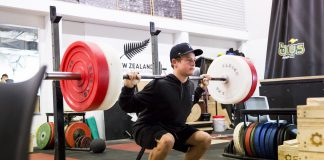No need to rub your eyes, you are reading that right. Lifting weights will improve your running.
If you don’t believe me and are wanting to improve your 1km, 5km, 10km, 21km or time for any distance, I encourage you to read on.
The phases of each stride or step you take when walking or running can all be described by a term we call the gait cycle. A complete gait cycle begins when one foot makes contact with the ground and ends when the same foot makes contact again with the ground. It is made up of two phases: stance & swing.
In the stance phase, the foot is in contact with the ground bearing your body weight. This phase is again split into three phases (1.Initial contact, 2. Midstance and 3. Propulsion). Initial contact refers to when the foot initially makes contact with the ground, usually with the heel making contact first. The knee flexes just before the foot hits the ground, and the foot pronates (rolls in) which causes the foot and leg to act together as shock absorbers. Midstance (also called the single support phase) is where the foot provides a stable platform for the body weight to pass over. This phase is when the other foot is in the swing phase, so all the body weight is borne by a single leg, which makes the lower limb particularly susceptible to injury. Propulsion is the final stage of the stance phase, it begins immediately as the heel lifts off the ground. The swing phase begins with the ‘toe off’ and ends just before the foot makes contact with the ground again and a new gait cycle starts. This phase is important to set the foot and leg up in preparation for heel contact and the next stance phase.
Now that we have gone over a brief breakdown of the gait cycle, we can dive into how lifting weights will improve your running. When it comes to lifting for runners, there are three main goals I see to be important:
- Injury prevention – toughen connective tissues and strengthen the muscles to improve injury resilience.
- Muscular power – produce force quickly so you can run faster and finish strong with a fast finishing kick.
- Neuromuscular coordination – improve the communication pathways between the brain and muscles for higher running economy, efficiency, and a smooth stride.
When we talk about lifting weights, I understand the general perception is if you start to lift weights, you will start to get “bulky”. If you want to lift weights specifically to improve running, or want to find a good balance of lifting weights and running, then you will not be lifting to get bulky – you will be lifting to get stronger and more powerful. Absolute strength (the ability to lift heavier weights) and power training (the ability to produce a lot of force quickly) are forms of weights training that you will want to focus on as they will achieve the three goals mentioned above. When prioritising these forms of training you should focus on compound “larger” standing movements eg: Deadlift, squats, presses, because running is done standing, right?
How fast you run is determined by how much force you can produce off each stride. The only way to increase force production is by getting stronger, which involves lifting heavier weights than you may used to. You want to perform exercises that work multiple muscle groups and avoid the standard “bodybuilding” way of training, which is to target 1-2 muscle groups per session, because the goal isn’t to get bigger – it is to get stronger. By getting stronger overall and increasing force production, you are able to improve stride length (how far each stride is) and stride frequency (how many strides you take in one minute for example) – these two factors make up how efficient and economic we run. By running more efficiently and economically, we will reduce risk of injury, be able to produce force quicker and improve communication between the brain and muscles.
Conclusion
So to answer the question – does lifting weights improve running? IT DOES! Increasing the amount of force we produce with each step will simply make us run faster and more efficiently, and this is done through absolute strength and power. I understand that talking about lifting heavy may be initially an uncomfortable conversation and the aim of this write up is to not make you uncomfortable, but to encourage you and bring to the light some of the benefits of weight training for runners. I want this to be a conversation starter and I can’t say this enough but I encourage you to start looking at lifting weights as an important part of your running training and training in general.
If you’d like more information on the context of this write up or are looking for a personal trainer or a weights program to improve your running, please feel free to get in contact with me.
Contact Bayley
[email protected]
021 149 7284






































